
| 1 | Captain André Cailloux |  Photo creds: |
Captain André Cailloux was a Creole army captain during the Civil War and one of the early organizers of the Louisiana Native Guards, the first all-Black Union regiment of any North American Military unit. Cailloux was born enslaved in Plaquemines Parish in 1825, gained his freedom in 1847, and was a self-employed cigar maker before the war. Cailloux was a founder of the Friends of Order, a Black fraternal organization. Along with other members of the Friends of Order and the Louisiana Native Guards, he aided in creating increased opportunities for people of color to fight in the war. For more information about Captain Cailloux and his accomplishments, visit https://www.bayouroad.com/cailloux-park. |
||
| 2/3 | Buffalo Soldiers | 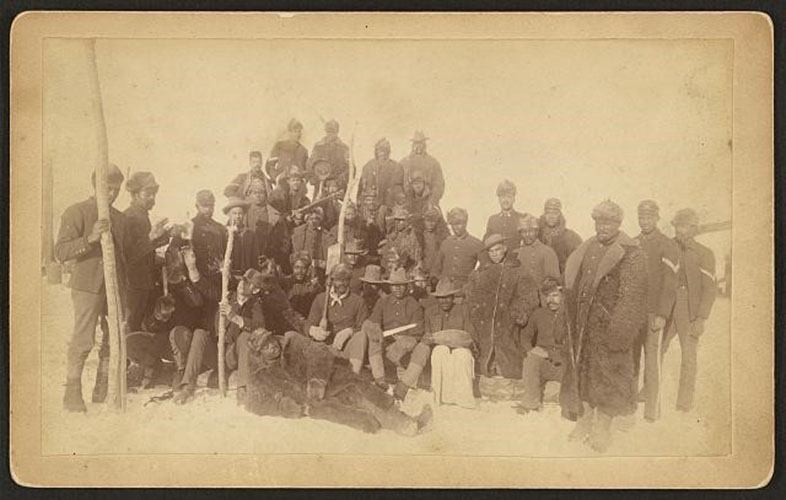 |
Buffalo soldiers of the 25th Infantry, some wearing buffalo robes, Ft. Keogh, Montana Repository: Library of Congress Prints and Photographs Division Washington, D.C. 20540 USA http://hdl.loc.gov/loc.pnp/pp.print Buffalo Soldiers were part of four all-Black regiments established in 1866 by Congress as part of an effort to help rebuild the U.S. after the Civil War and fight on the Western frontier during the Plain Wars. Indigenous tribes of the plains gave the nickname “Buffalo Soldiers” to the 10th Cavalry, and the nickname quickly became synonymous with the other three regiments formed in 1866. Buffalo Soldiers helped protect westward expansion by building roads and participating in military wars, such as the Spanish-American War and the Philippine-American Wars. Buffalo Soldiers were also some of the first park rangers in national parks, such as Yosemite and Sequoia National Parks. The Buffalo Soldiers regiments disbanded during the Korean War in 1948 because of Executive Order 9981 which desegregated the military. For more information about the Buffalo Soldiers, visit |
||
| 4 | Lieutenant Richard Walter English | 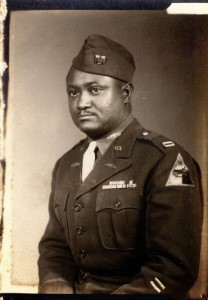 Photo Creds: |
Lieutenant Richard Walter English was a decorated school teacher, administrator and soldier who served in Germany under the 761st Tank Battalion, an all-Black combat unit during World War II. English completed his high school education at McDonough 35 Public High School in New Orleans, graduated with a Bachelor of Science from Dillard University in 1930, began his tenure as a chemistry teacher in the Orleans Parish public school system in 1932 and enlisted in the U.S. Army in 1942. English served as a member of the 761st, known as the “Black Panthers” and the first African American armored unit to enter combat during the Battle of the Bulge in December 1944. The battalion was one of the first American units to meet up with Soviet forces in Austria and saw action in France, Belgium and Germany, capturing over 30 towns and liberating several concentration camps. English has earned a Purple Heart medallion, five battle stars and six other medals for his combat service. For more information about Lieutenant English and his accomplishments, visit |
||
| 5a. | Corporal Albert Porche |  |
Corporal Albert Porche was born in Houma, Louisiana, in 1922 and was a support personnel for the Tuskegee Airmen Experiment, also known as the Red Tails. Porche volunteered for the Army after working with Western Auto Parts in Houma and joined the 99th Fighter Squadron, the first African American aviation unit to be deployed overseas. Porche’s responsibilities as an armorer included the maintenance of machine guns, bombs and cameras mounted in the aircraft. With Porche’s assistance, the 99th Fighter Squadron became part of the only all-African American Fighter Group, the 332nd. For more information about Corporal Porche and his accomplishments, visit |
||
| 5b | Lieutenant Colonel Lee A. “Buddy” Archer, Jr. |  Photo cred: |
Lieutenant Colonel Lee A. “Buddy” Archer, Jr. was born in New York in 1919 and was fascinated by stories of World War I pilots from an early age. Archer applied for pilot training in the U.S. Army Air Corps in 1941, but the Army Air Corps denied appointment because government policy did not allow Black citizens to serve in the Armed Forces. Still determined to serve his country, Archer left New York University where he was studying International Relations to join the Army. Archer joined the Army Air Force in 1942 as part of the Tuskegee Airmen Experiment, a group of Black pilots who never lost an allied bomber to enemy air action in over 200 escort missions in World War II. Archer was the only confirmed ace of the Tuskegee Airmen Experiment. For more information about Lieutenant Colonel Archer and his accomplishments, visit |
||
| 6 | Louisiana Supreme Court Justice Revius Ortique Jr. |  |
Louisiana Supreme Court Justice Revius Ortique Jr. was born in New Orleans, Louisiana, in 1924 and served as an Army officer for four years during World War II. After his service, he earned an undergraduate degree from Dillard University in 1947, a master’s degree from Indiana University in 1949 and a juris doctor degree from Southern University Law School in 1956. Ortique served five terms as president of the Urban League of Greater New Orleans. A few of Ortique’s accomplishments early in his career are serving as the president of the National Bar Association, the Community Relations Council in New Orleans, the National Legal Aid and Defender Association, and the Louis A. Martinet Legal Society. In 1978, the Louisiana Supreme Court appointed him to serve on the Orleans Parish Civil District Court. Ortique became the first African American judge elected to the Orleans Parish Civil District Court in 1979 and became the first African American judge chief judge of the same court in 1984. Ortique became the first African American to serve on the Louisiana Supreme Court in 1992 and served until his retirement in 1994. Four U.S. presidents appointed him to five different presidential commissions. For more information about Justice Ortique and his accomplishments, visit |
||
| 7 | Brigadier General Sherian Cadoria | 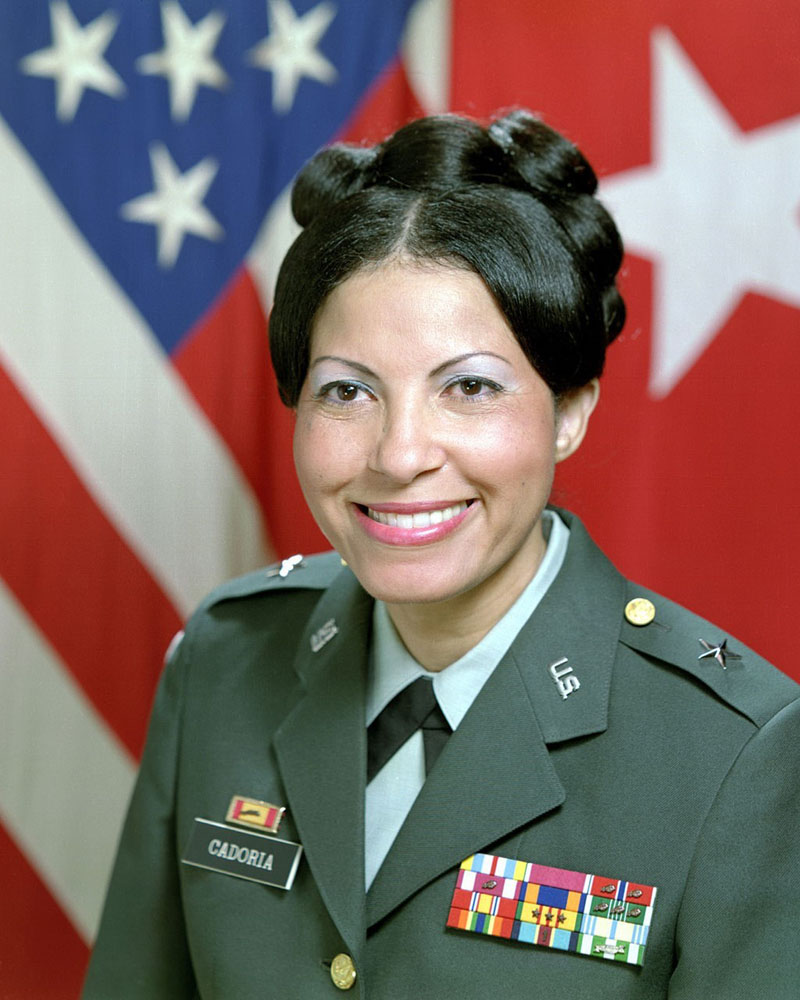 |
Brigadier General Sherian Cadoria was born in Marksville, Louisiana, in 1940 and grew up cleaning houses and assisting her mother, brother and sister as a farmhand. With support from her mother and her high school English teacher, Cadoria enrolled at Southern University. In her junior year at Southern, Cadoria joined the WAC Junior Training Program, ensuring her the rank of corporal after an intensive four-week training session. Southern University selected Cadoria in her senior year to be the only participant in the program. After receiving her commission and graduating with a degree in business education, she became the first woman to command the all-male Military Police Training Battalion in Fort McClellan, Alabama. Cadoria served 33 consecutive months in Vietnam and was selected to be the first Black woman to attend the Command and General Staff College. In 1990, Cadoria retired from the Army with the rank of brigadier general after 29 years of distinguished service, retiring as the highest-ranking Black woman in the military at the time of her retirement. For more information about Brigadier General Cadoria and her accomplishments, visit |
||
| 8 | Colonel Margaret E. Bailey |  |
Colonel Margaret E. Bailey served in the U.S. Army Nurse Corps. Bailey became the first Black lieutenant colonel in 1964, the first Black chief nurse in a mixed, non-segregated unit in 1966, and the first Black full colonel in 1967. She served in the Corps for 27 years, from July 1944 to July 1971, nine of which she served in France, Germany and Japan. In the later years of her military career, Bailey actively worked with minority organizations to increase Black participation in the Nurse Corps. After she retired from the Army, she served as a consultant to the Surgeon General in the Nixon administration to continue her mission to increase diversity in the Corps. For more information about Colonel Bailey and her accomplishments, visit |
||
| 9 | Third Class Doris Miller |  |
U.S. Navy Third Class Doris Miller is an African-American hero of World War II. Less than a month before his twentieth birthday, Miller enlisted in the Navy and was assigned to the USS West Virginia as a second-class messman. On December 7, 1941, Miller was on board when the first bombs hit his ship at Pearl Harbor. Miller raced to the main deck to assist the mortally wounded captain and started to attack plans with an unmanned anti-aircraft machine gun—a weapon that, as an African American in a segregated military, Miller had not been trained to operate. For his bravery, Miller was the first African American to be awarded the Navy Cross, the third-highest naval award for combat gallantry. During the battle of the Gilbert Islands in November 1942, Miller’s ship was torpedoed and sunk in the Pacific Ocean. |
||
| 10 | Secretary Lloyd James Austin III | 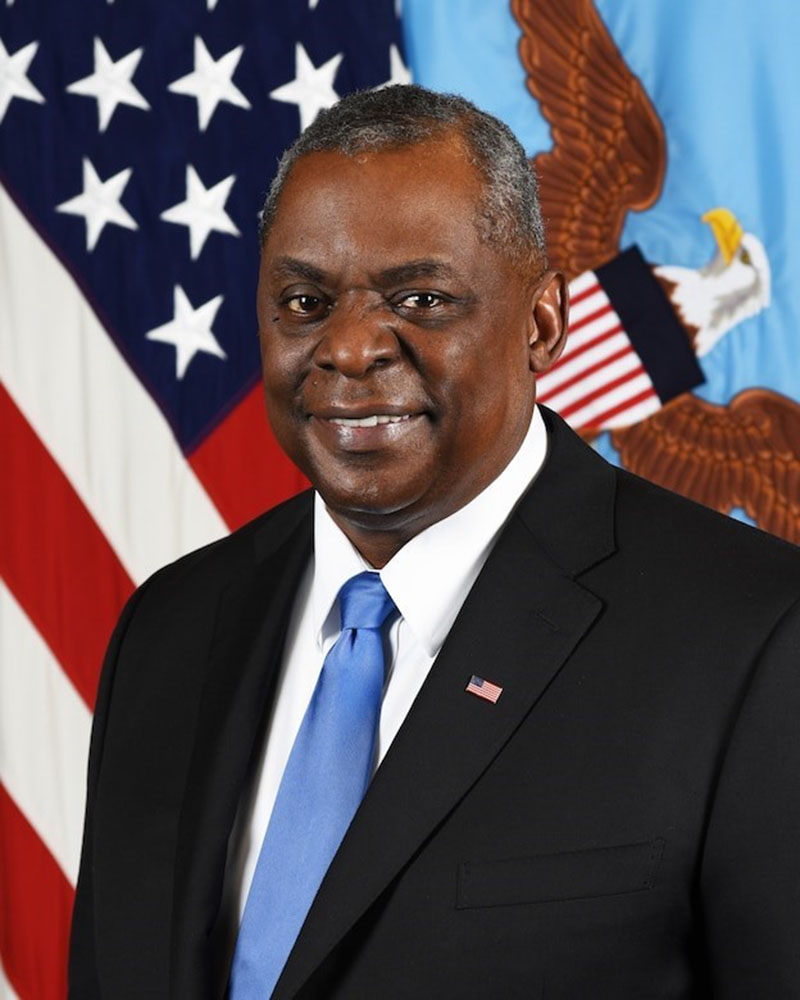 |
Secretary Lloyd James Austin III was sworn in as the 28th Secretary of Defense in 2021. Austin is the principal assistant to the President in all matters relating to the Department of Defense and serves on the National Security Council. His 41-year career in the Army included command of the corps, division, battalion and brigade levels. Austin was awarded the Silver Star for his leadership of the Army’s 3rd Infantry Division during the invasion of Iraq in 2003. He assumed the duties of Commanding General of U.S. Forces in Iraq in 2010, overseeing all combat operations in the country. After a tour as the Army’s Vice Chief of Staff, Austin concluded his uniformed service as the Commander of U.S. Central Command, responsible for all military operations in the Middle East and Afghanistan and leading U.S. and coalition efforts to battle ISIS in Iraq and Syria. He retired from the Army in 2016. For more information about Secretary Austin and his accomplishments, visit |
||
| 11 | Lieutenant General Russel L. Honoré |  |
Lieutenant General Russel L. Honoré is a decorated 37-year army veteran and a global authority on leadership, disaster management, and climate preparedness. Honoré served as the 33rd commanding general of the U.S. First Army at Fort Gillem, Georgia. He is best known for serving as the commander of the Joint Task Force Katrina responsible for coordinating military relief efforts in the wake of Hurricane Katrina, earning him the nickname “Category 5 General.” A Louisiana native, he founded the GreenARMY, a coalition of environmental experts and advocates, to protect against pollution while fighting climate change and the natural disasters it causes. During his military career, General Honoré held numerous commands, including Vice Director for Operations for the Joint Chiefs of Staff and Commander of the Standing Joint Force Headquarters-Homeland Security. For more information about Lieutenant General Honoré and his accomplishments, visit |
||
| 12 | Secretary Colin Luther Powell | 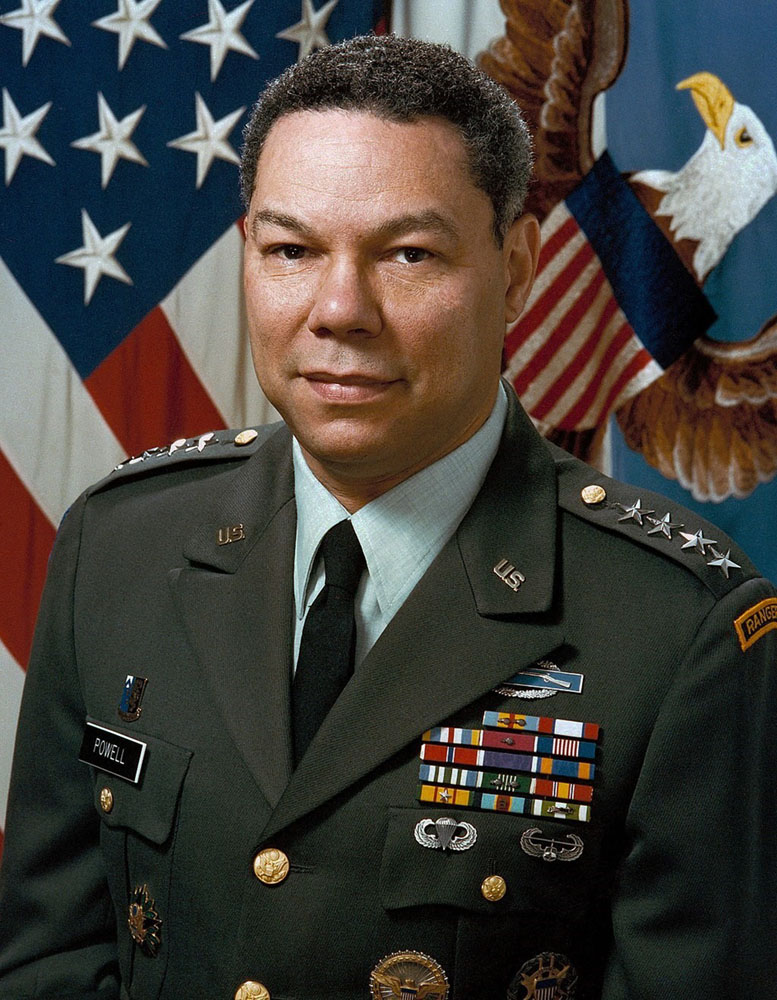 |
Secretary Colin Luther Powell was appointed as the first Black Secretary of State by George W. Bush on January 20, 2001, after being unanimously confirmed by the U.S. Senate. He served for four years, leaving the position on January 26, 2005. He attended City College of New York, where he began his military service, joining the Reserve Officer Training Corps. After graduating in 1958, Powell was commissioned a second lieutenant in the U.S. Army. During his 35 years in the Army, he served two tours in Vietnam, was stationed in West Germany and South Korea, and acted as President Ronald Reagan's Deputy National Security Advisor in 1987 then National Security Advisor from 1988 until 1989. In 1989 he was promoted to the rank of general and was appointed by President George H.W. Bush to the position of Chairman of the Joint Chiefs of Staff. In the four years Powell served in that capacity, he oversaw 28 crises, including Operation Desert Storm in 1991. After his retirement in 1993, he founded America's Promise, an organization which helps at-risk children. For more information about Secretary Powell and his accomplishments, visit |
||
| 13 | Red Tail airplane flown by the Tuskegee Airmen | 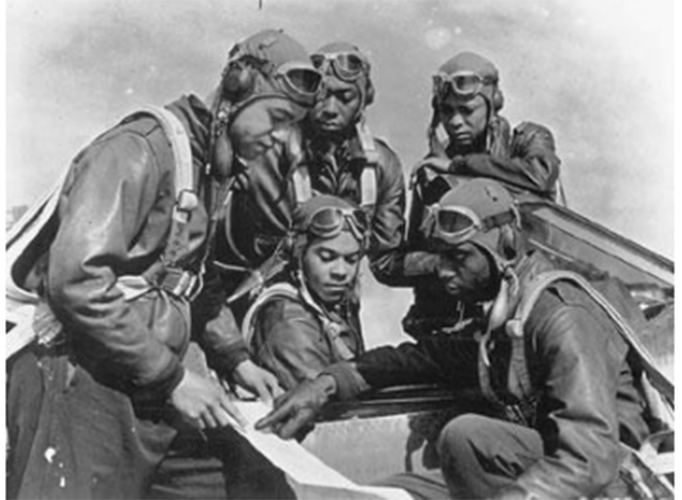 Photo creds: |
Before the Tuskegee Airmen, no African American had ever been a United States military pilot. The Jim Crow laws, a series of racist laws that enforced the ‘separate but equal’ treatment of African Americans, were used as justification for blocking previous attempts by African American soldiers to become pilots. Between 1941 and 1946, roughly 1,000 black pilots were trained at a segregated air base in Tuskegee, AL. The Tuskegee Airmen flew hundreds of patrol and attack missions for the Twelfth Air Force, flying P-40 and P-39 airplanes, before they were reassigned to the 15th Air Force to escort B-17 and B-24 heavy bombers, using P-47 and P-51 airplanes. The famous ‘Tuskegee Airmen’ of the 332nd Fighter Group became part of the 15th Air Force, escorting American bombers as they flew over Italy. As escorts, flying P-47s and later P-51s, they were responsible for protecting larger bombers from German fighter planes. The Tuskegee Airmen flew more than 15,000 sorties between May 1943 and June 1945. Bomber crews often requested to be escorted by these ‘Red Tails,’ a nickname acquired from the painted tails of Tuskegee fighter planes, which were a distinctive deep red. Sixty-six Tuskegee Airmen died in combat. They had one of the lowest loss records of any escort fighter group. For more information about the Tuskegee Airmen, visit https://www.nationalww2museum.org/war/articles/tuskegee-airmen-interview-daniel-haulman. |
||
| 14 | Black soldiers standing watch over each other | ||||
| 15 | African American burial ground being visited by a veteran | ||||
| 16 | United States Space Force |  |
|||
| 17 | General Michael E. Langley |  |
General Michael E. Langley, U.S. Marine Corps, is the first African American four-star general for the U.S. Marine Corps. He was born in Shreveport, Louisiana. Gen. Langley became the sixth commander of U.S. Africa Command in August 2022. U.S. Africa Command is one of seven joint-service geographic combatant commands and is responsible for all U.S. military operations and activities to protect and advance U.S. national interests in Africa. Gen. Langley graduated from the University of Texas at Arlington and was commissioned in 1985. He commanded at every level from platoon to regiment – including Battery K, 5th Battalion, 11th Marines, in support of Operation WILDFIRE in the Western U.S.; battalion and regimental commands in 12th Marines forward deployed in Okinawa, Japan; and both the 201st Regional Corps Advisory Command-Central and Regional Support Command – Southwest in support of Operation ENDURING FREEDOM in Afghanistan. For more information about General Langley and his accomplishments, visit |
||
| A | American Flag - 50 stars |  |
|||
| B | American Flag - 15 stars |  |
|||
| C | American Flag - 13 stars |  |
|||
| D | Joint Chiefs of Staff | 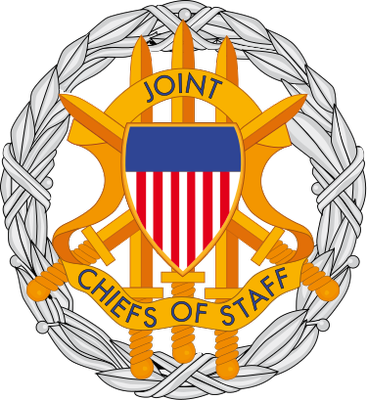 |
|||